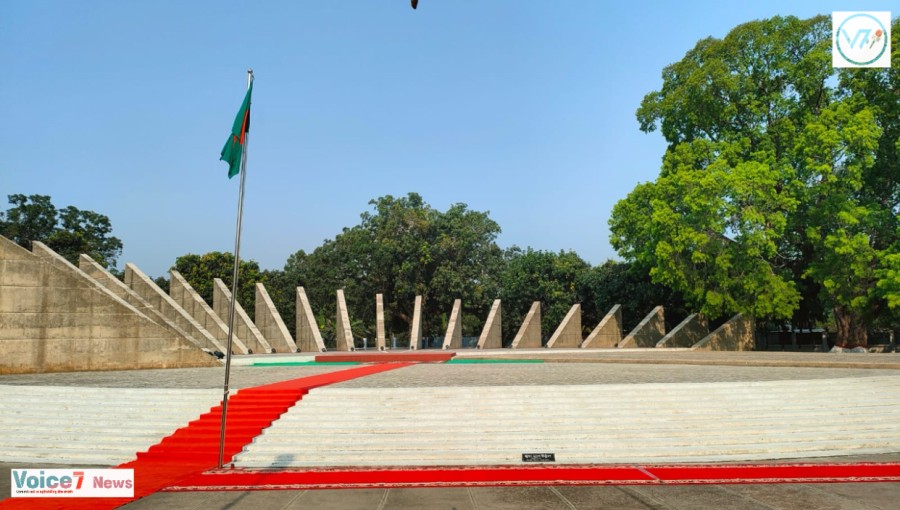
Photo: Voice7 News
Baidyanatala was given the name Mujibnagar in honour of Bangabandhu Sheikh Mujibur Rahman. Photo voice7 news
Syed Nazrul Islam, the acting president of the Bangladeshi government in exile during the liberation struggle, officially launched the project on April 17, 1974, at the celebration of Mujibnagar Day.
Historically, Mujibnagar played a significant role in the swearing-in of Bangladesh's first temporary government.
On April 17, 1971, in the Meherpur district's village of Baidyanathtala, the government in exile of the People's Republic of Bangladesh swore an oath, marking the beginning of the War of Liberation.
In honour of Bangabandhu Sheikh Mujibur Rahman, Baidyanatala was called Mujibnagar.
Eventually, the location of the oath was memorialised with the construction of the "Mujibnagar Smriti Saudha" memorial monument.
Soon after the War of Liberation, the Bangladeshi government decided to create a lasting legacy for Mujibnagar.
Banglapedia states that the government ordered the construction of a memorial in Mujibnagar on August 31, 1973.
Syed Nazrul Islam, the acting president of the Bangladeshi government in exile during the liberation struggle, officially launched the project on April 17, 1974, at the celebration of Mujibnagar Day.
However, after 1975, the project's construction was put on hold.
The decision to finish the monument's construction was made in 1986, and funding of around two crore Taka was approved. On April 17, 1987, Mujibnagar Smriti Saudha was solemnly opened.
The Mujibnagar Smriti Saudha is a representation of the Bangali people's sacrifice and the battle for liberty.
Architect Tanveer Naquib's design for this monument, which was built on twenty-three triangular-shaped concreted pillars, seems to represent the rising sun.
Twenty-three pillars represent the twenty-three years of Pakistani domination as well as the conflict that the Bangali people progressively went through throughout that time. Half of the altar is covered by the line of pillars.
The Mujibnagar Smriti Saudha Complex was created by annexing new buildings such as a guest house, a mosque, and a library between 1996 and 2001. It is situated on a 20.10-acre plot of land.
There is a mural in this facility honouring the Liberation War's events. According to Mujibnagar and Meherpur locals, The Mujibnagar Memorial, the Liberation War Memorial Complex, the historic Amrakanan (mango orchard), and the six-step rose garden that embodies the historical six-point metaphor should all be viewed as a living representation of the liberation war in Bangladesh.
There are statues depicting several significant Liberation War events inside the Liberation War Memorial Complex.
More historical occurrences, like as Bangabandhu's famous March 7th address, the installation of the Mujibnagar administration, and the capitulation of Pakistani forces, are shown in statues outside the monument complex.
Any astute traveller would be drawn to these sculptures, which are connected to the memories of the liberation battle.
Mujibnagar Smriti Saudha in Meherpur district is often visited by a large number of journalists, researchers, and visitors, both local and foreign.
Meherpur was formerly a part of the Greater Kushtia district, but in 1983 it was granted its own district.
End/v7n/mrm/sma/dk/

Comment: